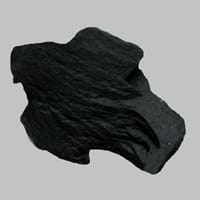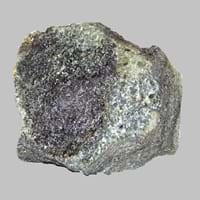Definition
Lignite is a soft brownish coal which shows traces of plants and is intermediate between bituminous coal and peat
Amphibolite can be defined as a granular metamorphic rock which mainly consist of hornblende and plagioclase
Discoverer
Unknown
Alexandre Brongniart
Etymology
From French, Latin lignum wood + -ite1
From Amphibole + -ite
Class
Sedimentary Rocks
Metamorphic Rocks
Sub-Class
Durable Rock, Soft Rock
Durable Rock, Hard Rock
Group
Not Applicable
Not Applicable
Other Categories
Coarse Grained Rock, Fine Grained Rock, Medium Grained Rock, Opaque Rock
Coarse Grained Rock, Medium Grained Rock, Opaque Rock
Texture
Amorphous, Glassy
Banded, Foliated, Massive
Color
Black, Brown, Dark Brown, Grey, Light to Dark Grey
Black, Brown, Green, Grey
Durability
Durable
Durable
Appearance
Veined or Pebbled
Foliated
Interior Uses
Not Yet Used
Countertops, Decorative Aggregates, Entryways, Floor Tiles, Flooring, Homes, Hotels, Kitchens
Exterior Uses
Not Yet Used
As Building Stone, As Facing Stone, Paving Stone, Office Buildings
Other Architectural Uses
Not Yet Used
Curbing
Construction Industry
for Road Aggregate, Steel Production
As Dimension Stone, Building houses or walls, Cobblestones, Construction Aggregate, for Road Aggregate, Landscaping, Production of Glass and Ceramics, Roadstone
Medical Industry
Not Yet Used
Not Yet Used
Antiquity Uses
Not Yet Used
Artifacts, Sculpture, Small Figurines
Commercial Uses
Electricity Generation
Cemetery Markers, Commemorative Tablets, Creating Artwork
Types
Xyloid Lignite or Fossil Wood and Compact Lignite or Perfect Lignite
Hornblendite
Features
Generally rough to touch, Helps in production of Heat and Electricity, Used as fossil fuel
Clasts are smooth to touch, Matrix variable, Surfaces are often shiny
Archaeological Significance
Monuments
Not Yet Used
Used
Famous Monuments
Not Applicable
Data Not Available
Sculpture
Not Yet Used
Used
Famous Sculptures
Not Applicable
Data Not Available
Pictographs
Used
Not Used
Petroglyphs
Used
Not Used
Figurines
Not Yet Used
Used
Formation
Coal formation takes place due to accumulation of plant debris in a swamp environment. The Coal formation process continues, as peat turns into lignite brown or black coal at increasing heat and pressure.
Amphibolite is a coarse-grained metamorphic rock which forms by metamorphism of mafic igneous rocks like basalt and gabbro or from the metamorphism of clay-rich sedimentary rocks like marl or graywacke.
Mineral Content
Not Available
Amphibole, Andalusite, Biotite, Calcite, Epidote, Garnet, Hornblade, Kyanite, Magnetite, Olivine, Plagioclase, Pyroxene, Staurolite, Wollastonite
Compound Content
Carbon, Hydrogen, Nitrogen, Oxygen, Sulphur
Aluminium Oxide, CaO, Iron(III) Oxide, FeO, Potassium Oxide, MgO, MnO, Sodium Oxide, Phosphorus Pentoxide, Silicon Dioxide, Titanium Dioxide
Types of Metamorphism
Not Applicable
Not Applicable
Types of Weathering
Biological Weathering, Chemical Weathering, Mechanical Weathering
Chemical Weathering, Mechanical Weathering
Types of Erosion
Chemical Erosion, Water Erosion, Wind Erosion
Chemical Erosion, Glacier Erosion, Sea Erosion, Wind Erosion
Grain Size
Medium to Fine Coarse Grained
Medium to Coarse Grained
Fracture
Conchoidal
Irregular to Conchoidal
Streak
Black
White to Grey
Porosity
Highly Porous
Less Porous
Luster
Dull to Vitreous to Submetallic
Vitreous to Dull
Cleavage
Non-Existent
Irregular
Toughness
Not Available
2.3
Specific Gravity
1.1-1.4
2.5
Transparency
Opaque
Opaque
Density
800-801 g/cm3
2.85-3.07 g/cm3
Specific Heat Capacity
Not Available
Resistance
Heat Resistant
Heat Resistant, Pressure Resistant, Wear Resistant
Deposits in Eastern Continents
Asia
Bangladesh, Burma, Cambodia, China, India, Indonesia, Kazakhstan, Malaysia, Mongolia, Pakistan, Turkey, Vietnam
Russia, Turkey
Africa
Botswana, Kenya, Morocco, Mozambique, South Africa, Tanzania
Burundi, Djibouti, Eritrea, Ethiopia, Kenya, Madagascar, Rwanda, Somalia, South Africa, Sudan, Tanzania, Uganda
Europe
Belgium, Bulgaria, England, France, Germany, Greece, Hungary, Kosovo, Netherlands, Norway, Poland, Romania, Serbia, Slovakia, Slovenia, The Czech Republic, Ukraine, United Kingdom
Germany, Greece, Iceland, Norway, Poland
Others
Not Yet Found
Not Yet Found
Deposits in Western Continents
North America
Canada, Mexico, USA
Canada, USA
South America
Brazil, Chile, Colombia, Venezuela
Brazil
Deposits in Oceania Continent
Australia
New South Wales, Queensland, Victoria
South Australia, Western Australia










